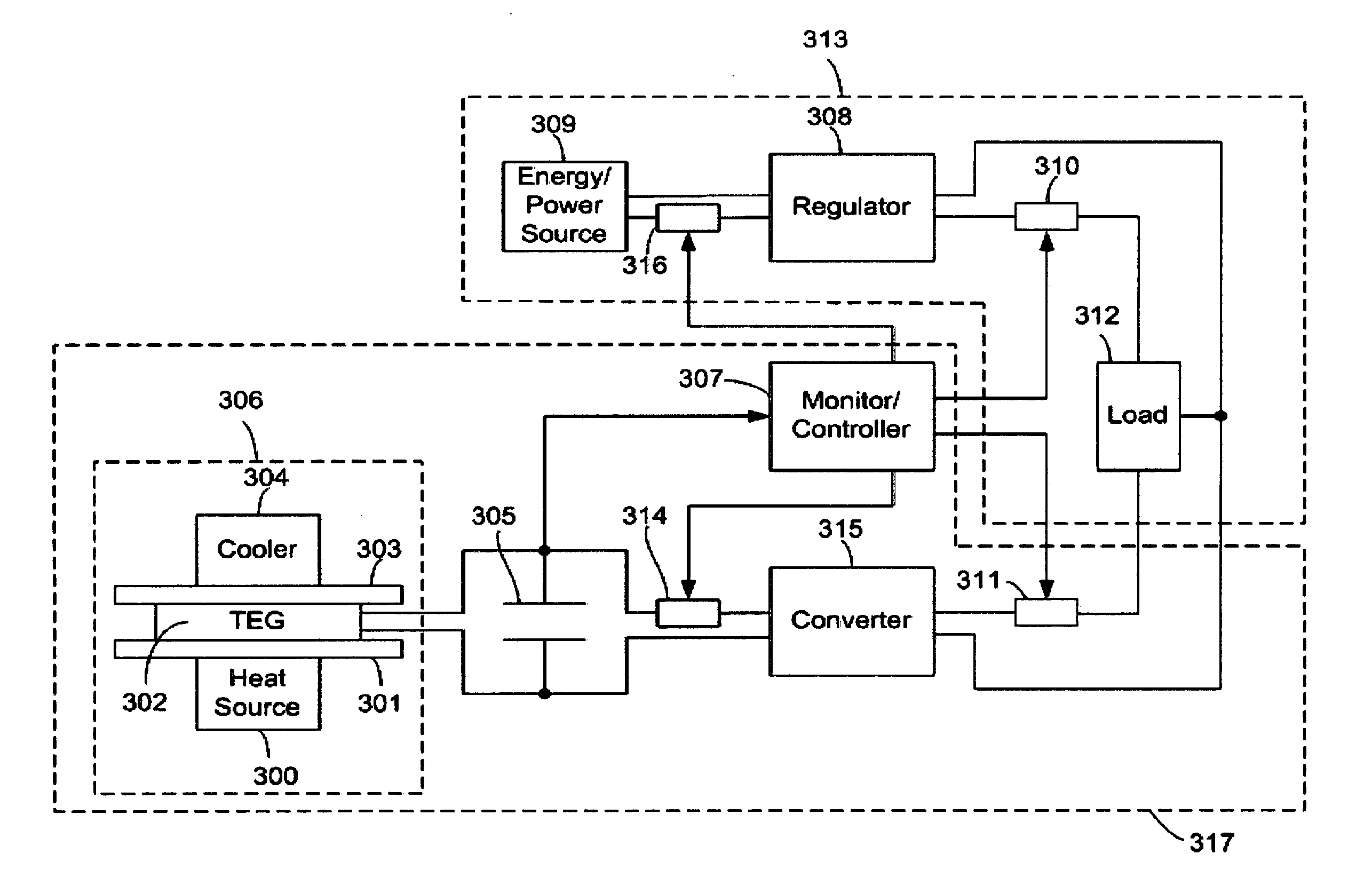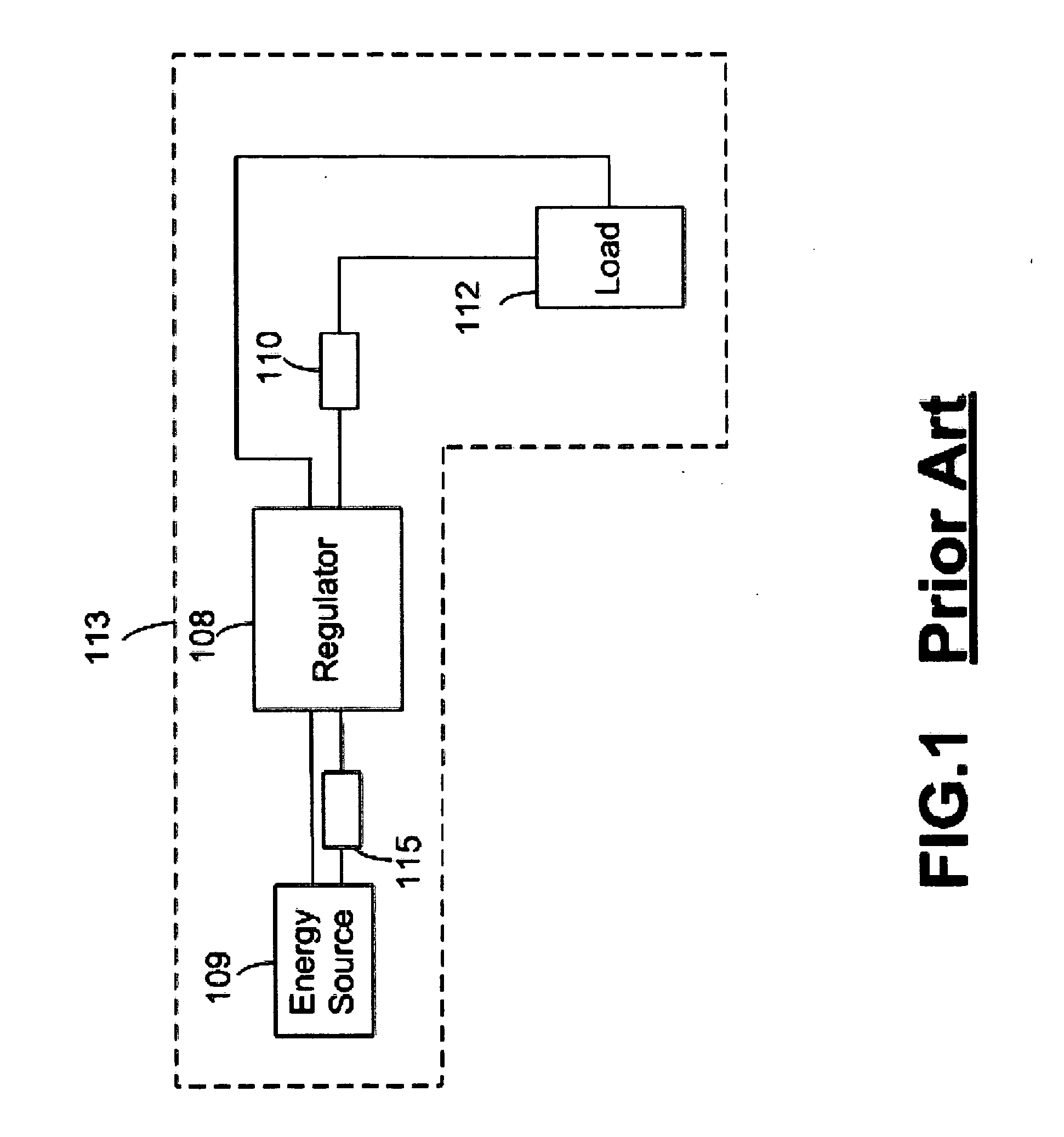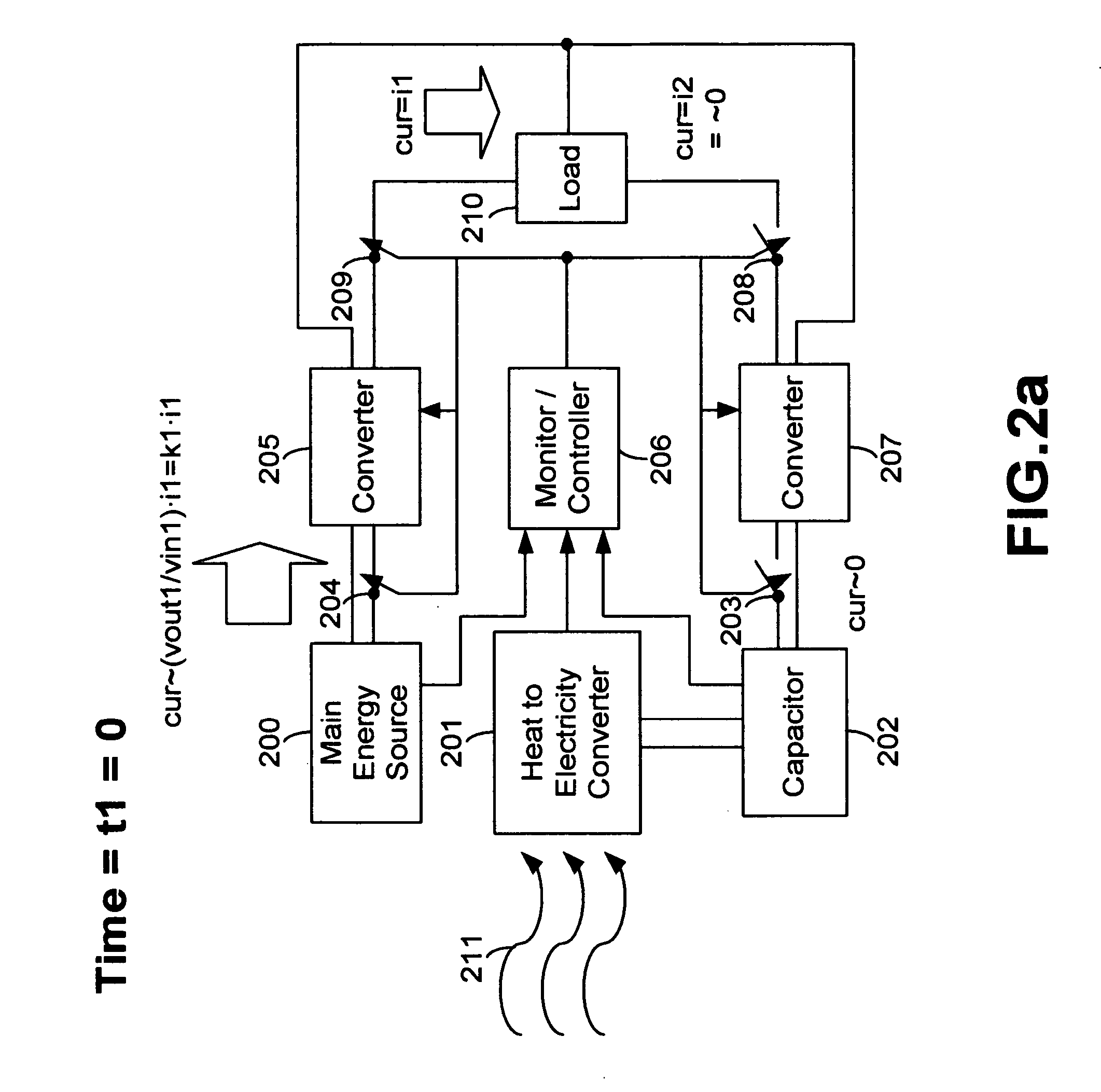System and method for efficient power utilization and extension of battery life
a technology of efficient power utilization and battery life, applied in the field of power systems, can solve the problems of increasing the amount of power required for driving the load, not resulting in considerably longer battery life, and inefficient use of electrical energy to recharge the main power source, so as to prolong the life of this main energy/power source, and reduce the amount of power drawn
- Summary
- Abstract
- Description
- Claims
- Application Information
AI Technical Summary
Benefits of technology
Problems solved by technology
Method used
Image
Examples
Embodiment Construction
[0017] The present invention improves power efficiency and can extend the operating life of a main energy / power source, such as a disposable battery, a rechargeable battery, a fuel cell, a power generator, a reactor, and / or any combination of these, i.e., hybrid power source(s), used to provide power to an electrical system or application. The main energy / power source can be either internal or external to the electrical system and may also be any form of power supply, such as power from an electrical outlet connected to a power grid.
[0018] In a preferred embodiment of the present invention the power efficiency of electrical systems is improved by reducing the power drawn from the main energy / power source as described in the following sections. It is also possible to supply extra power to an electrical load(s) with the embodiments of the claimed subject matter described herein.
[0019] Furthermore, it is possible to increase the operational life (“battery life”) and the power efficie...
PUM
 Login to View More
Login to View More Abstract
Description
Claims
Application Information
 Login to View More
Login to View More - R&D
- Intellectual Property
- Life Sciences
- Materials
- Tech Scout
- Unparalleled Data Quality
- Higher Quality Content
- 60% Fewer Hallucinations
Browse by: Latest US Patents, China's latest patents, Technical Efficacy Thesaurus, Application Domain, Technology Topic, Popular Technical Reports.
© 2025 PatSnap. All rights reserved.Legal|Privacy policy|Modern Slavery Act Transparency Statement|Sitemap|About US| Contact US: help@patsnap.com



